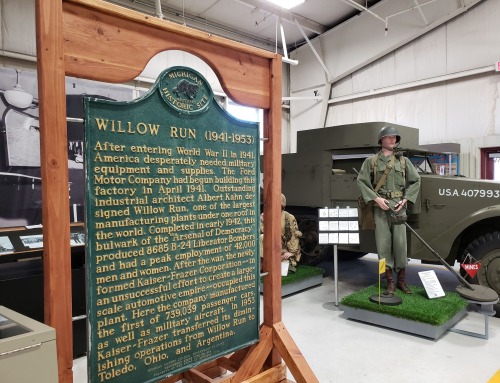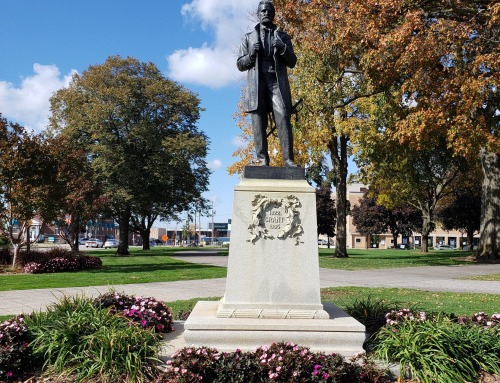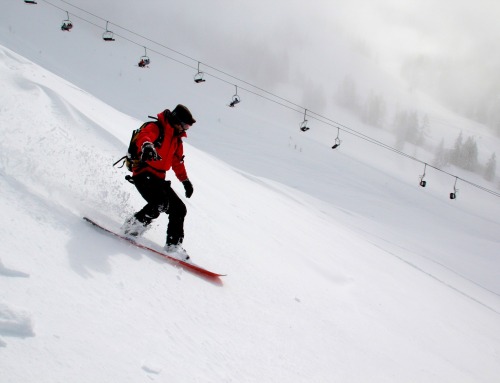These days for most people, Labor Day means a last long look at summer. Jazz fills the air in Detroit and thousands of people take a stunningly beautiful stroll across the Mackinac Bridge. Boats leave their docks with swimmers aboard and skiers behind. Barbecues and picnics can be found in backyards and parks around the state. People will flock to Royal Oak for the Arts, Beats and Eats festival and Neywago for the Logging Fest. Agriculture is the order of the day at the Michigan Bean Festival in Fairgrove and in Romeo at the Michigan Peach Festival. Meanwhile, the Renaissance Festival in Holly reminds us of days long ago. Not so long ago, however, Labor Day did not exist at all, and we have many of our brave Michigan ancestors to thank for what we now enjoy.
Michigan is truly a state that was built through hard, tough labor. Workers not only toiled for long hours under unsafe conditions, they took brave stands to improve their lives, and consequently ours for generations to come. Early union organizing centered on the skilled-trade workers. On April 3, 1837, Detroit’s first strike broke out among the carpenters and journeymen. They were seeking 10-hour work days and $2 pay.
Organized printers got involved in the labor movement in 1839 and created the state’s first union paper, The Rat Gazette. The term “Rat” was coined to describe the nonunion workers who spied for the bosses on organzing efforts. Employers, put off by their tactics, formed the Detroit Employers Association to counter unionizing activity. They immediately fired and blacklisted workers identified as union organizers, in an attempt to crush the movement. Their slogan was, “Prevention Is Better Than the Cure,” and it helped create an image of Detroit as an anti-union town.
Struggles between workers and employers continued for decades across the country. Eventually, New Yorker, Peter McGuire emerged as a leading voice for the laborer. At an 1882 meeting of the New York Central Labor Union, he introduced a resolution calling for workers to lead a “festive parade through the streets of the city” on the first Monday of September. More than 30,000 marchers participated in New York.
In 1883, thousands again lined the parade route, and the New Yorkers decided to urge other central labor bodies around the country to sponsor similar celebrations the following year. Detroit was one of only a handful of cities that joined the celebration with a program held in Recreation Park. It attracted 50,000 Knights of Labor and the Trade and Labor Assembly. The large crowd of laborers marched proudly and defiantly down Woodward Avenue to the park. By 1885, several other cities had joined the movement and finally on June 28, 1894, President Grover Cleveland, a long-time enemy of organized labor, succumbed to public pressure and signed a Labor Day holiday bill.
One battle was won, but many more would follow. Detroit’s population began to explode with the growth of the auto industry. Between 1910 and 1929 the number of the city’s inhabitants tripled to 1.8 million as thousands sought work in the auto plants to provide a better life for their families. Then came the stock market crash of 1929, and the despair that followed. On March 6, 1930, 35,000 jobless workers marched down Woodward in a national protest against unemployment and hunger. Demonstrations continued and culminated when thousands joined together and walked to the Ford employment office in Dearborn. Henry Ford, whose plants had laid off more than one-third of his employees, had declared that anyone “who wanted a job could find one.” Shots were fired into the job-hungry crowd, and four protesters were killed.
As the decade continued, with a growing depression, strikes spread to other occupations including hotel workers, waitresses, and retail clerks. Few resulted in major victories for the workers, but they were not deterred. The dogged determination of Detroit auto workers taught many employers that cutting wages would only provoke more strikes, and that was a costly proposition.
The auto workers needed a big victory though, and on February 11, 1937, they got one in Flint. Up until then, employers had been able to defeat the conventional walkout strike with replacement workers. Picketers suffered a great deal with harsh weather, boredom, and no wages, while replacement workers did their jobs. The workers of the Fisher Body took a new tactic. They organized a sitdown instead, allowing strikers to shut down production and remain protected from the weather. Their 44-day occupation of the Fisher Body plant forced General Motors to sign a contract and started a wave of progress for laborers’ rights, built on the historic victory of the General Motors workers in Flint.
Nowadays, there are conflicting opinions throughout the state about the role of unions, but one thing is for certain, every American worker, in every industry, owes a debt of gratitude to the brave families who suffered and fought for our dignity and rights. Without them, it is highly unlikely that benefits like safe work environments, reasonable hours, overtime pay, vacation and sick leave, and holidays like Labor Day, would ever exist.
Enjoy this great American tradition with family and friends, and while relaxing among the splendor that is Michigan, take a moment or two to think of the men and women who sacrificed so much to make it possible.







Leave A Comment
You must be logged in to post a comment.